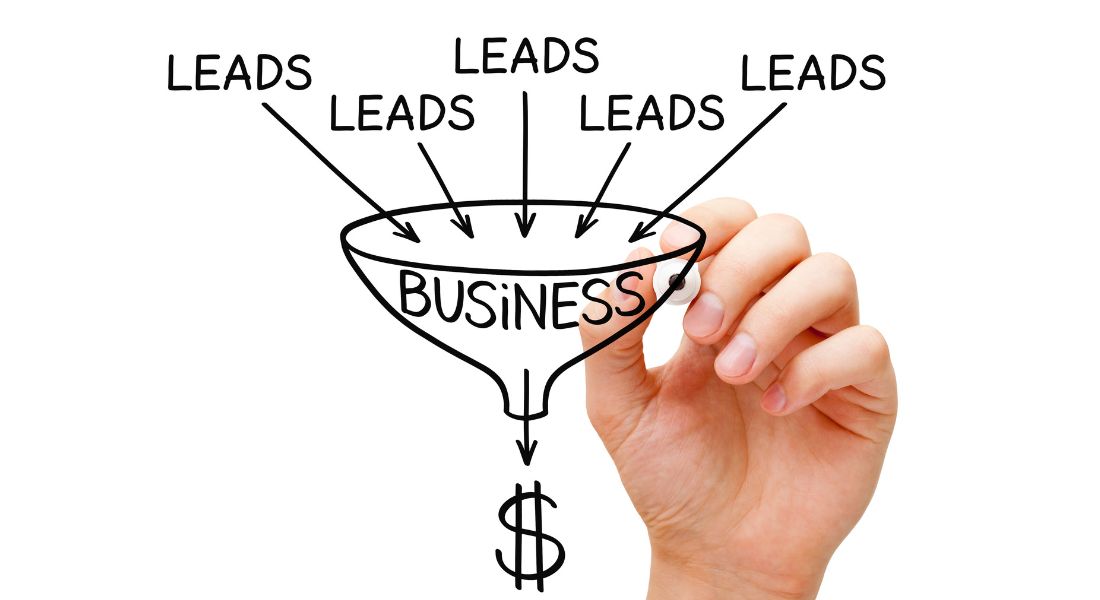Are you tired of being stuck in the never-ending cycle of chasing prospective clients with little success? Raise your hand if you’ve scoured every book, course, or podcast in pursuit of that winning lead generation strategy! Well, search no more – we have compiled a list of 10 proven strategies backed by AI prospecting tools that will not only skyrocket your leads but also leave competitors trailing in your wake. Discover how to attract high-quality leads effortlessly while sipping on your favourite coffee – let’s dive right in!
There are several effective ways to increase lead generation, including optimising your website for search engines, utilising social media marketing, creating compelling content and calls-to-action, offering valuable incentives, networking and building relationships within your industry, and consistently following up with leads. It is important to create a comprehensive lead generation strategy tailored to your specific business needs and target audience. Testing different tactics and measuring results can help you identify what works best for your organisation.
Post Contents
ToggleProven Techniques for Lead Generation
Increasing lead generation is a fundamental aspect of business growth. For businesses to thrive, they need to generate leads that would eventually convert into paying customers. Generating leads require an intentional and strategic approach that would likely give the desired results. Here are some proven techniques that can help you generate leads:
Content Marketing
Content marketing involves creating valuable and relevant content to attract potential customers. This technique is crucial in increasing lead generation as it allows businesses to establish themselves as thought leaders in their respective industries. By sharing original and relevant content such as blog posts, podcasts, videos, and social media posts, businesses can draw potential customers towards their brand and ultimately gain leads.
Pay-Per-Click Advertising (PPC)
PPC advertising is a technique that helps drive targeted traffic to your website using paid search ads on platforms like Google Adwords. It is a highly effective way of generating leads because it targets users who are already searching for products or services similar to yours. By leveraging PPC advertising, businesses can significantly increase their chances of generating leads and converting them into paying customers.
Email Marketing
There’s no doubt that email marketing represents one of the most cost-effective ways of generating new leads for any business. However, it has received some criticism about its effectiveness in recent years. Nonetheless, it remains a critical element in developing customer relationships and nurturing existing ones. Email marketing provides businesses with an opportunity to reach out to people who have expressed interest in their products or services by subscribing to their newsletters.
Trade Shows and Conferences
Attending conferences or trade shows present an opportunity for businesses to interact directly with potential customers and other industry stakeholders. Participating in these events allows organisations to showcase their products or services, engage with prospects in meaningful conversations and generate leads through networking.
As businesses strive to reach their full potential in terms of growth and profitability, it is critical they incorporate these proven techniques into their lead generation strategy. In the next section, we delve into how businesses can optimise their websites for traffic in a manner that increases lead generation.

Optimise Your Website for Traffic
In today’s digital-first world, businesses’ websites represent an essential toolset in generating leads. With the right approach, websites can attract visitors and actively nurture them towards becoming paying customers. Here are some ways businesses can optimise their website for traffic to ensure a steady stream of leads.
Simple Website Design
A website that is clean, easy to navigate, and visually appealing can make all the difference between retaining visitors or losing them. Therefore, businesses must invest in a simplified website design that ensures users find what they’re looking for without much hassle. It’s important to note that overly complicated website designs tend to deter visitors and hinder lead generation efforts.
Search Engine Optimisation (SEO)
The utilisation of SEO best practises is arguably one of the most important strategies any business could use when optimising their website for traffic and leads. SEO allows websites to rank higher on search engine results pages, making them more visible to potential customers searching for relevant keywords related to your products or services. By leveraging SEO best practises, businesses can significantly increase their chances of generating quality leads that are highly likely to convert.
User-Focused Content
While it is crucial to create content that reflects your organisation’s values, opinions, and unique selling propositions (USPs), it’s equally important that such content resonates with your target audience. By targeting your content towards specific segments of your buyer persona with useful information at each stage of the buying journey, you will nurture users towards becoming valuable leads.
Utilise Chatbots
Chatbots provide a more personalised experience for website visitors, as they can respond to queries in real-time. Chatbots can assist visitors in finding what they need and provide them with the necessary information, boosting their chances of becoming leads for your business.
Incorporating these strategies into your lead generation strategy will surely jumpstart your business’s growth trajectory. In the next section, we explore how targeted advertising helps businesses generate leads from suitable sources.

Utilise Social Media Channels
Social media has become an essential tool for businesses to increase their reach and engage with potential and existing customers. With billions of users worldwide, social media platforms like Facebook, Twitter, LinkedIn, Instagram, and others have the ability to expose your brand to a vast audience with different interests, backgrounds, and buying behaviours. Here are some proven strategies to help you utilise social media channels for lead generation:
First and foremost, you need to identify which platform is best suited for your business. For instance, if you are targeting other businesses or professionals who want to network or find job opportunities, then LinkedIn is a great option. If you want to showcase visual content to a broad audience that is interested in fashion, food, travel, art, and lifestyle, then Instagram would be the way to go.
Once you have identified the platform that best suits your target audience, it’s time to create content that will resonate with them. You can do this by sharing information on industry news, tips and tricks related to your products or services, behind-the-scenes glimpses of your company culture and events, customer testimonials and success stories, curated content from other sources that your followers will find interesting or entertaining.
In addition, it’s essential to post regularly but not overwhelm your followers with too much content. Posting once a day or every few days is optimal for most businesses unless you are running a campaign or promoting an event. The key is consistency.
Another aspect of social media marketing that often gets overlooked is engagement. It’s not enough to simply post content regularly; you need to interact with your followers and customers. Responding promptly to comments or questions shows that you are approachable and care about your customers’ opinions. Encouraging user-generated content by asking questions or running contests can also generate buzz around your brand.
Think of social media as a virtual networking event. Just as you would introduce yourself to new contacts and follow up with them after the event, you need to engage with your followers and customers on social media platforms.
- According to a HubSpot survey in 2020, 61% of marketers identified lead generation as their top challenge.
- A study by Forrester Research found that companies focusing on lead nurturing generated 50% more sales-ready leads at a 33% lower cost.
- A report by LinkedIn revealed that content marketing is responsible for generating up to three times more leads than traditional outbound marketing and costs 62% less.
Targeted Advertising for Lead Sources
While organic reach on social media can be effective, it’s often limited by algorithms or the sheer number of companies vying for attention. That’s where targeted advertising comes in. By creating ads that are specifically tailored to your target audience, you can increase the likelihood of generating leads and conversions. Here are some tips for utilising targeted advertising for lead generation:
The first step is to identify your target audience. This could be based on demographics like age, location, income level, interests, behaviours, or even job titles. Once you have pinpointed who you want to reach, you can create an ad that speaks to them specifically.
For instance, if you are a company that sells organic skincare products and wants to target women aged 25-40 who care about the environment and beauty trends, then you could create an ad that showcases your product’s natural ingredients, cruelty-free ethos, and innovative packaging design.
It’s like offering someone their favourite flavour of ice cream instead of trying to sell them something they don’t like or need.
Another crucial aspect of targeted advertising is choosing the right platform and ad format. Each platform has its unique strengths and weaknesses when it comes to reaching audiences and driving conversions. For example, Facebook ads are versatile and can be used for various business goals, while LinkedIn ads are more suited for B2B marketing.
Additionally, make sure that your ad copy is clear, concise, attention-grabbing, and includes a compelling call-to-action (CTA). Your ad’s visuals or videos should also be eye-catching and tell your brand’s story effectively.
Lastly, don’t forget to track the performance of your ads and tweak them based on the data you gather. Analysing metrics such as click-through rates, conversion rates, cost-per-click, and return-on-investment can help you optimise your campaigns and improve their effectiveness over time.

Analysing and Improving Current Strategies
One of the most crucial steps in increasing lead generation is to analyse and evaluate your current strategies. This process allows you to identify what works, what doesn’t work, and what needs improvement. By analysing and improving your current strategies, you can optimise your efforts to achieve greater success in generating high-quality leads.
For instance, consider tracking the conversion rates of your landing pages. If you are not getting enough conversions, it might be time to review and optimise your landing page design, copy, call-to-action (CTA), or offer. Reviewing the data from Google Analytics or other tools can give you a better understanding of which elements need modification.
Similarly, A/B testing is an effective way to test and analyse different elements of a campaign. By creating two versions of a landing page or email campaign with one variation on each element, companies can quickly determine which version elicits a better response from their target audience. The information gathered from A/B testing can then be used to improve future campaigns’ effectiveness.
Some businesses lack clear goals and objectives when adhering to marketing campaigns. Without clear marketing goals, lead generation activities are often unfocused, ineffective and do not provide an acceptable return on investment (ROI). Therefore it’s important for business owners to define SMART objectives – Specific, Measurable, Attainable, Relevant and Time-bound before commencing any activity.
Now that we’ve discussed analysing and improving your current strategies let’s discuss how networking and referrals play a big role in growing leads.
Networking and Referrals to Grow Leads
Growing leads through networking helps in building relationships with colleagues, customers or even like minded industry experts who share the same business goals as you do. It’s important not to view these opportunities solely as transactions but rather real opportunities for fostering long-lasting partnerships with people within your industry. The following are some valuable tips to help you create a strong and influential network:
Trade shows, conferences, and other industry events are great ways to make new contacts. These occasions present the opportunity to develop relationships with potential customers, establish yourself as an authority in your industry and build your brand visibility in the marketplace.
Creating meaningful connections is essential when it comes to networking. Prepare for these opportunities by having a clear pitch that encompasses your products or services’ unique value proposition. This could be achieved by setting up professional LinkedIn accounts where you display your expertise by sharing quality content regularly.
Just like planting a seed, nurture each connection with time through regular communication either through emails, calls or even grabbing coffee between events. Remember to be patient since nurturing takes time as these relationships represent investments of significant effort and resources.
Finally, requesting referrals from happy customers is one of the most successful lead generation methods. In general people tend to trust recommendations from friends and family more than any other type of advertising; as such setting up refer-a-friend promotions can bring about huge rewards for minimal investment.
Embracing Advanced Techniques for Lead Generation
As technology advances, businesses need to keep up with the latest strategies and techniques to generate leads effectively. The use of AI prospecting tools can help businesses identify potential customers accurately and efficiently.
AI prospecting tools analyse customer data and use it to generate customised content for each customer. These tools can also predict customers’ behaviour patterns, allowing businesses to tailor their outreach efforts accordingly.
For example, a car dealership might use an AI prospecting tool to analyse the online behaviour of prospective buyers. Based on this analysis, the tool may recommend that the dealership sends out targeted emails or social media messages to these customers with specific offers or promotions.
One company that has implemented AI prospecting tools for lead generation is Xerox. The company used AI software to analyse data from a variety of sources, including website analytics and social media interactions. By doing so, Xerox was able to generate targeted marketing campaigns and improve its conversion rates significantly.
Another advanced technique is account-based marketing (ABM). ABM is a strategy that involves targeting individual accounts rather than a broad audience. This approach requires businesses to create personalised campaigns based on each account’s unique needs and preferences.
According to research conducted by Altera Group, businesses that use ABM see a 32% increase in their average deal size. Furthermore, ABM results in higher quality leads, which are more likely to convert into customers.
AI chatbots are another advanced technique that can complement lead generation efforts effectively. Chatbots use natural language processing (NLP) algorithms to converse with customers in real-time. They can answer basic questions, provide product recommendations and even schedule appointments with sales representatives.
However, there is some concern regarding chatbots’ effectiveness in generating high-quality leads due to their lack of human touchpoints. Some argue that chatbots cannot replace human interactions and that businesses need to strike a balance between the two.
Despite this, chatbots have proven useful in reducing response times and improving lead generation efforts’ efficiency. For example, Salesforce implemented a chatbot called Einstein AI, which has helped the company improve its lead response time by up to 99%.
In conclusion, embracing advanced techniques for lead generation is crucial for businesses looking to stay ahead of their competition. It’s like upgrading from an old flip phone to a new smartphone – the former has limited capabilities, while the latter offers endless possibilities.
By utilising AI prospecting tools, account-based marketing strategies, and chatbots, businesses can better understand customers’ needs and preferences, create personalised campaigns, and improve their conversion rates significantly.
It’s essential to remember that these advanced techniques do not replace traditional lead generation methods but instead complement them. Finding the right balance and implementing a diverse range of strategies will help businesses generate leads more efficiently and effectively than ever before.





